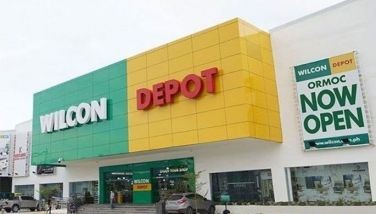Build it and they will come
(Second of two parts)
I saw four tall and young Caucasian adults along EDSA Makati – three males and a female – dressed very casually, a day before the Chinese New Year. I could feel their stress, trying to hail a bus or any means of transport, as they tried to do what the locals were doing. The locals were already beyond the sidewalk, along the main road, stressed and haggard but ready to run and latch onto the next bus that slowed down.
These Caucasians, obviously visitors, were not having the best time of their stay that afternoon. If it’s local grassroots experience they were looking for, they certainly got it. I must say though that it will be a common experience in all cities that urbanized at a rate much faster than the necessary infrastructure – or a city that is overdeveloped, and hence overly populated. “Where is the greenery?” or “Where are the trees?” pales in importance to the urgent question of “How do I get home?”
Tourism can modernize less-developed areas and decongest the metro. But that aspiration brings the same fear. Fernando Zobel de Ayala believes that overdevelopment is the biggest threat to the country’s natural attractions and to the preservation of the environment in these tourist spots. The same fear is shared by Secretary Ernesto Pernia, the director general of the National Economic and Development Authority (NEDA), who said that building codes (that for instance, limit the height of buildings in places like Bohol) should be strictly enforced. More importantly, Secretary Pernia said the culture in the place being developed must be preserved.
Well-founded fears indeed, and one only needs to look at Baguio City as an example where commercial and residential structures were put up with no regard to preserving the view, and culture, for that matter. Development in tourist spots appears to simply happen for the sake of development. That is when development is also a destruction. There is nothing that can’t be solved with a plan that involves a lot of input from locals and global best practices.
Much has been said about the country being a group of islands, and the need for bridges to connect them. Don’t get me wrong: roads, airports and major infrastructure are musts. From a tourist-centric sense, however, we may not need that much. And the answer could be strategic international airports in different parts of the country, plus seaplanes to ferry tourists from one province to the other.
Seaplanes don’t need runways and modern airports. They simply need a descent dock, and a bay area to take off from, and land on. With seaplanes, tourists in Bohol can be in the soothing bay of Romblon in no time, or those in very commercial Boracay can take a short plane ride to the pristine beaches of Saranggani while admiring from above how the light green waters that connect to the white beaches turn to soothing blue. Seaplanes can connect our islands, and everyone else in our tourism industry – and we barely scratched the surface of this potential.
Another potential worthy of attention is the NEDA chief’s personal advocacy for major cities in the country to be the center of performing arts – like a Broadway for Asia. I believe there is a lot of merit in this suggestion because of the Philippines’ natural talent pool. As a supplement, pockets of theater performances in different tourist spots that depict the history and culture of such places will be an additional attraction and something for tourists to look forward to.
A Broadway for Asia rests well with the ASEAN initiative to collectively sell the region as one tourist destination. Does this initiative make sense when we are supposed to be looking after ourselves in this tourism game of tug-of-war? Yes, it totally does. Because the Philippines is not the top draw for visitors in Asia, there is no way for the Philippine numbers but up. Besides, the Philippines needs help in promotion. Did you know that Malaysia is the top draw in the region (interchanging places with Thailand) on the heels of their “Malaysia truly Asia” campaign? Amazing campaign, even as factually, and with all due respect, the quality and number of tourist attractions in our country cannot be matched.
Our natural assets are unique merits, but this much I can say. From a sun that rises behind mountain tops, bringing clear skies and the feeling of hope, to a sun that sets over the horizon of a beautiful beach that makes one sentimental, the real game changer are the ones beside you, the ones you share the joy with in those moments.
True, we need to cater to changing tourist priorities, bring the right infrastructure, and leverage on technology. But there is no substitute for human warmth, honesty and sincerity. Filipinos are friendly, but there is nothing more reassuring to a stranger than making him feel that in this part of the world, he is in the company of family.
* * *
Alexander B. Cabrera is the chairman and senior partner of Isla Lipana & Co./PwC Philippines. He is the Chairman of the Tax Committee, and the Vice Chairman of EMERGE (Educated Marginalized Entrepreneurs Resource Generation) program of the Management Association of the Philippines (MAP). Email your comments and questions to [email protected]. This content is for general information purposes only, and should not be used as a substitute for consultation with professional advisors.
- Latest
- Trending




























